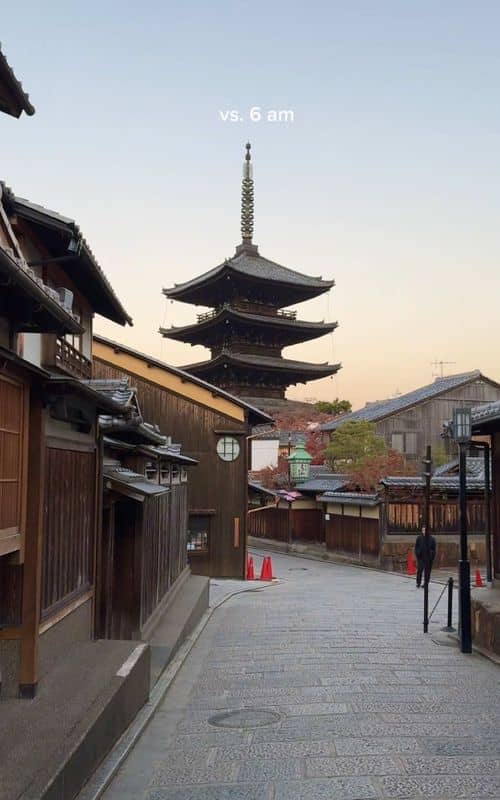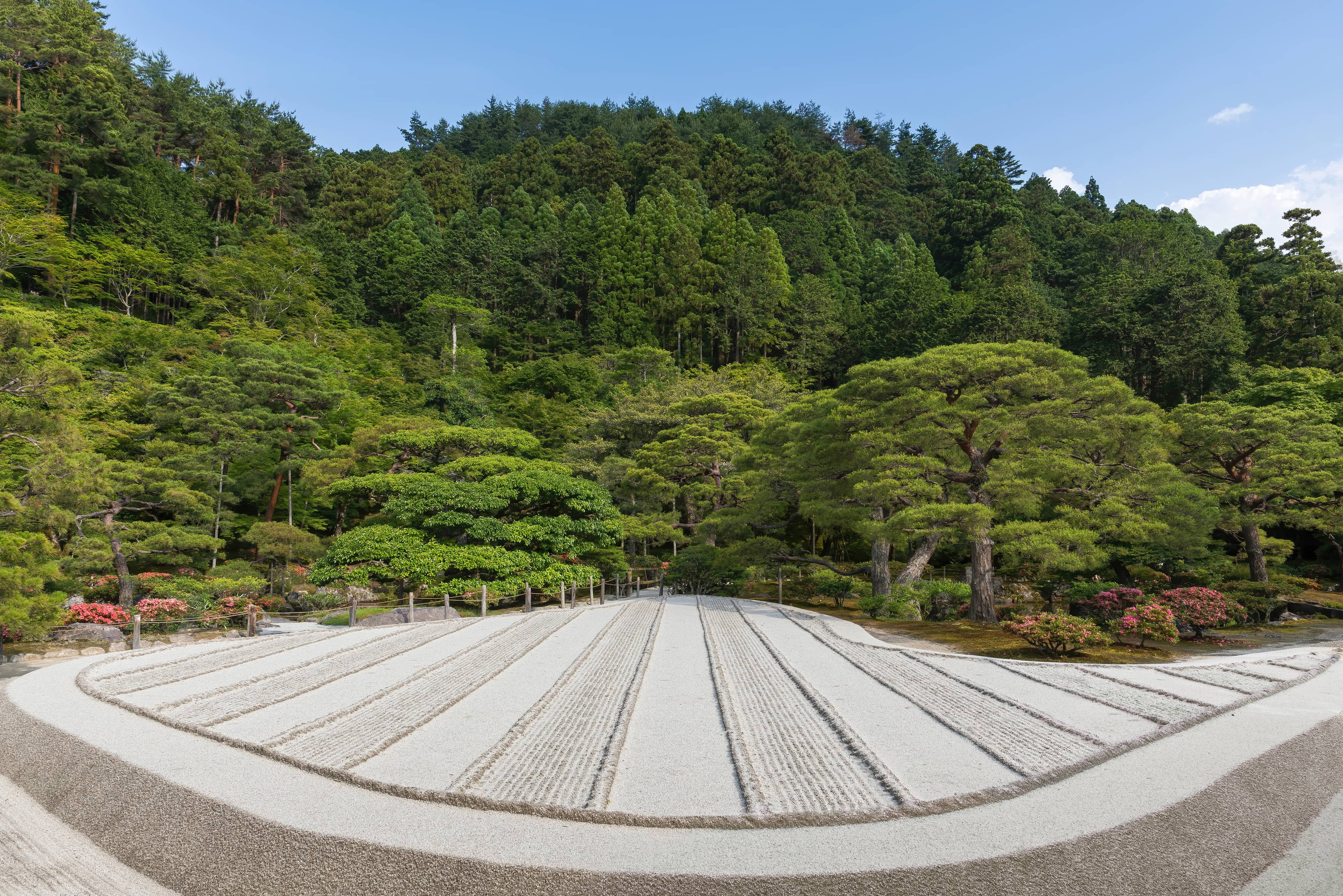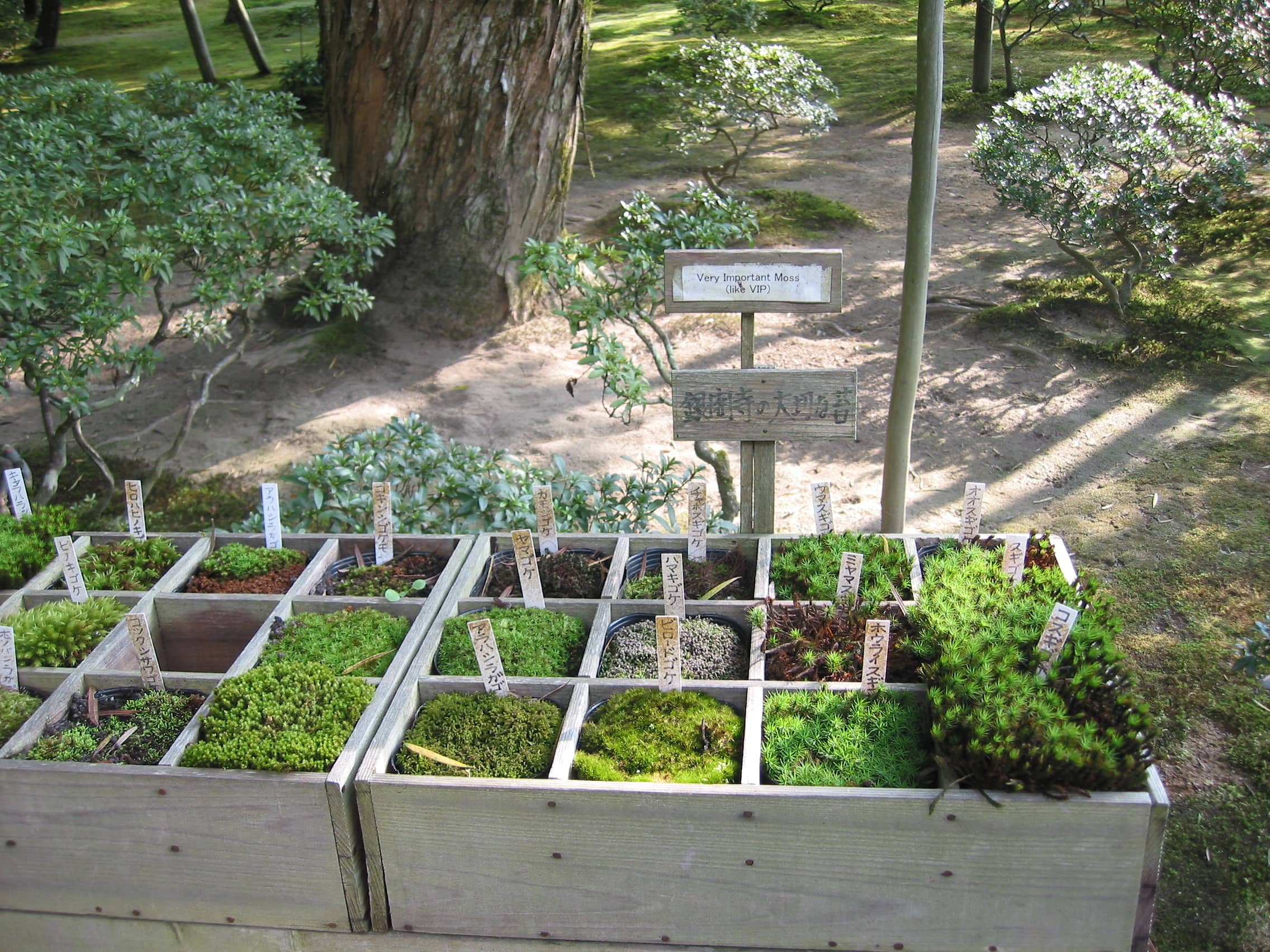
Ginkaku-ji Silver Pavilion Kyoto
A 15th-century Zen temple renowned for its understated beauty, tranquil gardens, and iconic sand mound.

Highlights
Must-see attractions

Social
From TikTok & Reddit
Best Time
Fewer crowds, peaceful atmosphere

Ginkaku-ji Silver Pavilion Kyoto
Best Time
Fewer crowds, peaceful atmosphere

Highlights
Must-see attractions
A 15th-century Zen temple renowned for its understated beauty, tranquil gardens, and iconic sand mound.
"Wonderfully serene and mind cleansing experience, much less crowded than most other temples."

🎯 Go Early to Avoid Crowds
Arrive right at opening to experience the tranquility before the main crowds arrive.
👟 Wear Comfortable Shoes
You'll be doing a lot of walking through the gardens.

Highlights
Discover the most iconic attractions and experiences

The Silver Pavilion
Main Hall
Though never adorned with silver, this elegant structure embodies Zen simplicity and offers a peaceful contrast to its golden counterpart.

Sea of Silver Sand
Garden
A meticulously raked sand garden featuring a large cone-shaped mound, symbolizing Mount Fuji.

Moss Garden Path
Garden
Wander through a lush, tranquil path lined with vibrant mosses, offering a serene escape.
Plans like a pro.
Thinks like you
Planning Your Visit
Beat the Crowds for Serenity
Embrace the Gardens' Simplicity
Best Times
Insider Tips
from TikTok, Instagram & Reddit
🎯 Go Early to Avoid Crowds
Arrive right at opening to experience the tranquility before the main crowds arrive.
👟 Wear Comfortable Shoes
You'll be doing a lot of walking through the gardens.
📸 Capture the Serenity
The gardens offer beautiful, peaceful photo opportunities, especially in the morning light.
💡 Don't Miss the Pine Tree
Look for the impressive 600-year-old pine tree to your right near the entrance.
Tips
from all over the internet
🎯 Go Early to Avoid Crowds
Arrive right at opening to experience the tranquility before the main crowds arrive.
👟 Wear Comfortable Shoes
You'll be doing a lot of walking through the gardens.
📸 Capture the Serenity
The gardens offer beautiful, peaceful photo opportunities, especially in the morning light.
💡 Don't Miss the Pine Tree
Look for the impressive 600-year-old pine tree to your right near the entrance.
🛍️ Unique Souvenir Finds
The street leading to the temple has unique shops with memorable Kyoto souvenirs.
What Travellers Say
Reviews Summary
Visitors often praise Ginkaku-ji's beautiful and serene Zen gardens, particularly the unique sand formations and mossy paths, finding it a peaceful escape. While some note it's smaller than expected and can get crowded, many appreciate its understated beauty and recommend visiting early or late for a more tranquil experience. The souvenir shops on the approach are also a pleasant surprise.
"The garden was actually quite nice. Busy but still nice. Not as big as I thought but pretty surreal to see it. But again the crowd take away from it all when you’re walking at grandma or grandpa pace due to the crowds. Would I go back there, yeah I would but probably earlier or later in the day. There is no bicycle parking. So have to park down the street near the bridge."
W T
"This temple and garden is smaller than most in Japan but we enjoyed it thoroughly. There were less crowds so it was quite peaceful in parts which allowed for quiet reflection. The gardens were very impressive and the sand formations were absolutely spectacular!
Additionally the street approaching the temple had some unique stores where we picked up some great souvenirs.
We really enjoyed our morning here - would recommend!"
Sharyn
"Wonderfully serene and mind cleansing experience. Much less crowded than most other temples I've been to in Kyoto. The sand art is a special delight and this is easily my favorite Japanese garden in the world.
Great little souvenir shop too with items that I haven't seen in any other one, so if you're looking for that unique set of memories from Kyoto, check it out!"
Andrey Lipattsev
What People Like
What People Dislike
Frequently Asked Questions
🚇 🗺️ Getting There
Ginkaku-ji is accessible by bus. Take bus number 5, 17, or 100 from Kyoto Station and alight at the Ginkakuji-michi bus stop. The temple is a short walk from there. Many visitors also combine a visit with the Philosopher's Path, as they are located nearby.
Yes, Ginkaku-ji is conveniently located near the Philosopher's Path, making it easy to visit both in one outing. It's also a reasonable taxi ride from Kinkaku-ji (Golden Pavilion), though they are on opposite sides of the city.
While you can cycle to the area, there is no dedicated bicycle parking at Ginkaku-ji itself. You may need to park your bike down the street near the bridge.
These two pavilions are on opposite sides of Kyoto. The most efficient way to travel between them is by taxi or by using Kyoto's bus system, though this can take some time.
Ginkaku-ji is not directly accessible by train. The nearest train stations are Kyoto Station or Demachiyanagi Station, from which you would need to take a bus or taxi.
🎫 🎫 Tickets & Entry
The admission fee for Ginkaku-ji is typically around 500 JPY. It's a reasonable price for the experience and the beauty of the gardens.
Ginkaku-ji is generally open from 8:30 AM to 5:00 PM daily. However, it's always a good idea to check the official website for any seasonal changes or holiday closures.
Advance booking is usually not required for Ginkaku-ji. Tickets can be purchased at the entrance upon arrival.
No, visitors cannot enter the Silver Pavilion building itself. The experience focuses on viewing the pavilion from the outside and exploring the surrounding gardens.
Yes, Ginkaku-ji is relatively compact compared to some other Kyoto temples. You can typically explore the grounds and gardens in about 50 minutes to an hour, making it suitable for a shorter itinerary.
📸 📸 Photography
The most iconic photo spots include the Sea of Silver Sand with its cone-shaped mound, the tranquil moss garden paths, and views of the pavilion across the pond.
Photography is generally allowed in the gardens and outdoor areas of Ginkaku-ji. However, it's important to be respectful of other visitors and the serene atmosphere.
Early morning or late afternoon, especially during the 'golden hour,' offers the best light for photography and fewer crowds.
Drone photography is typically prohibited at most temples and historical sites in Japan, including Ginkaku-ji, to preserve the peace and prevent disturbance.
A standard camera or smartphone is sufficient. A wide-angle lens can be useful for capturing the expanse of the gardens, while a telephoto lens can help isolate details.
🎫 🌿 Onsite Experience
The main attraction is the temple's understated beauty, its meticulously designed Zen gardens, and the iconic 'Sea of Silver Sand' with its sand cone.
Ginkaku-ji can get crowded, especially during peak tourist seasons and times. Visiting early in the morning or late in the afternoon can help avoid the largest crowds.
This is a famous dry landscape garden featuring a large, perfectly raked sand cone that symbolizes Mount Fuji, meant to catch the moonlight.
While official guided tours might not always be readily available, you can often find information about the temple's history and design through audio guides or by joining group tours that stop here.
Unlike the opulent Golden Pavilion, Ginkaku-ji is celebrated for its simplicity and natural beauty. It was never actually covered in silver, focusing instead on its Zen aesthetic and tranquil gardens.
For Different Travelers
Tailored advice for your travel style
👨👩👧 Families with Kids
🚶♀️ Solo Travelers & Contemplatives
📸 Photography Enthusiasts
Deep Dives
In-depth insights and expert knowledge
The Zen Philosophy of Ginkaku-ji
The temple was originally built in the 15th century as a retirement villa for Shogun Ashikaga Yoshimasa. After his death, it was converted into a Zen Buddhist temple, further cementing its contemplative purpose. The design philosophy emphasizes harmony with nature, encouraging visitors to find peace and introspection within its grounds. The carefully curated gardens, including the famous 'Sea of Silver Sand' and the moss garden, are integral to this experience, designed to evoke a sense of calm and mindfulness.
Exploring the Tranquil Gardens
Beyond the sand garden, a winding path leads visitors through a lush moss garden, a testament to Kyoto's verdant beauty. This shaded, tranquil area is a favorite for many, offering a sense of escape and serenity. The path eventually ascends a small hill, providing picturesque views of the temple and the surrounding landscape, allowing visitors to appreciate the garden's design from different perspectives. The overall experience is one of quiet reflection and appreciation for nature's artistry.
Ginkaku-ji vs. Kinkaku-ji: A Tale of Two Pavilions
In contrast, Ginkaku-ji embraces simplicity and understated elegance. Its unadorned wooden structure and meticulously designed Zen gardens offer a more tranquil and introspective experience. Many visitors find Ginkaku-ji to be more peaceful and less overwhelming than Kinkaku-ji, appreciating its subtle beauty and the opportunity for quiet contemplation. While Kinkaku-ji might be more immediately striking, Ginkaku-ji offers a deeper, more serene connection to Zen philosophy and Japanese garden design.






Social
from TikTok, Instagram & Reddit